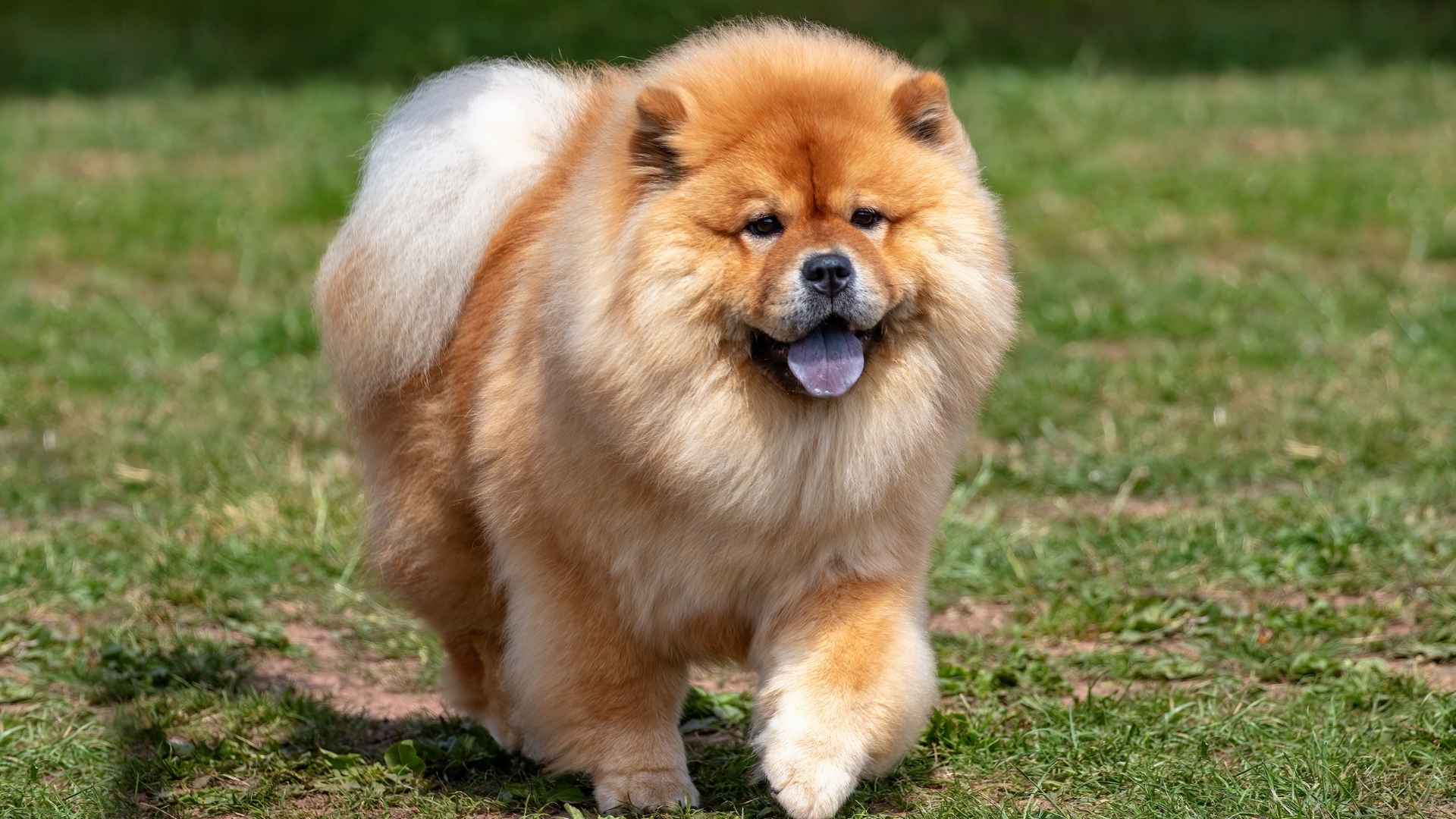Not all dogs stick out their tongues and reveal the usual bubblegum pink. Some show off a mysterious shade of blue that makes you do a double-take. It’s like Mother Nature dipped their tongue in blueberry slush and called it a day.
While this trait might seem unusual, it’s not as rare as you’d think—certain breeds naturally sport this cool-toned look, and no, they didn’t just eat a marker. Blue-tongued dog breeds, like the iconic Chow Chow and the wrinkly yet wonderful Shar-Pei, have long fascinated pet lovers with this quirky trait.
But what causes a dog’s tongue to turn blue in the first place? Is it a health concern, or just a built-in feature? Here, we’ll lick (pun fully intended) into the science, legend, and sheer charm behind these uniquely pigmented pups.
Whether you’re curious, looking to adopt one, or just want to impress your dog-loving friends with fun facts, we’ve got you covered. Let’s meet the dogs whose tongues are as cool as their personalities.
What Causes Dogs to Develop Blue Tongues?
If your dog has a blue or purple tongue, it’s most likely due to genetics. In some breeds, this tongue coloration results from higher levels of melanin, the natural pigment responsible for coloring skin, hair, and eyes. It’s completely normal for dogs to have darker pigmentation on certain body parts, like their nose, paws, lips, and areas around the eyes, which are known as “points.”
When a dog’s tongue—or even the gums and inner mouth—appears blue or black, it’s often because of an increased concentration of melanocytes. These are specialized cells that produce melanin, and their activity in the tongue area is similar to how freckles or birthmarks form on human skin.
Dog Breeds With Blue Tongues
1. Chow Chow
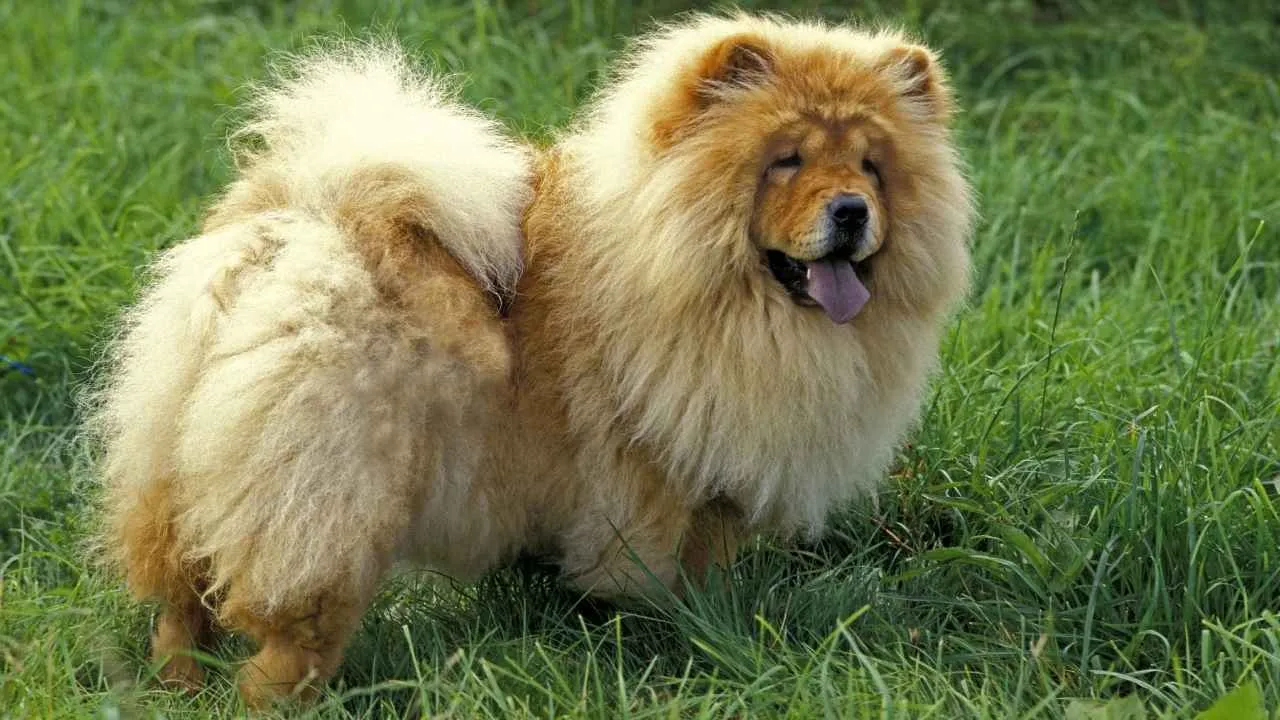
Let’s kick things off with the Chow Chow, the original blue-tongued wonder and possibly the only dog breed that looks like it was hand-crafted by a mythical creature with a love for lions, teddy bears, and snacking in silence.
The Chow Chow is a medium-sized dog standing about 17 to 20 inches tall at the shoulder and weighing between 45 to 70 pounds. This breed is instantly recognizable by its thick, dense double coat, which can be either rough or smooth. Completing their regal appearance is a tail that curls tightly over their back, enhancing their proud and majestic silhouette
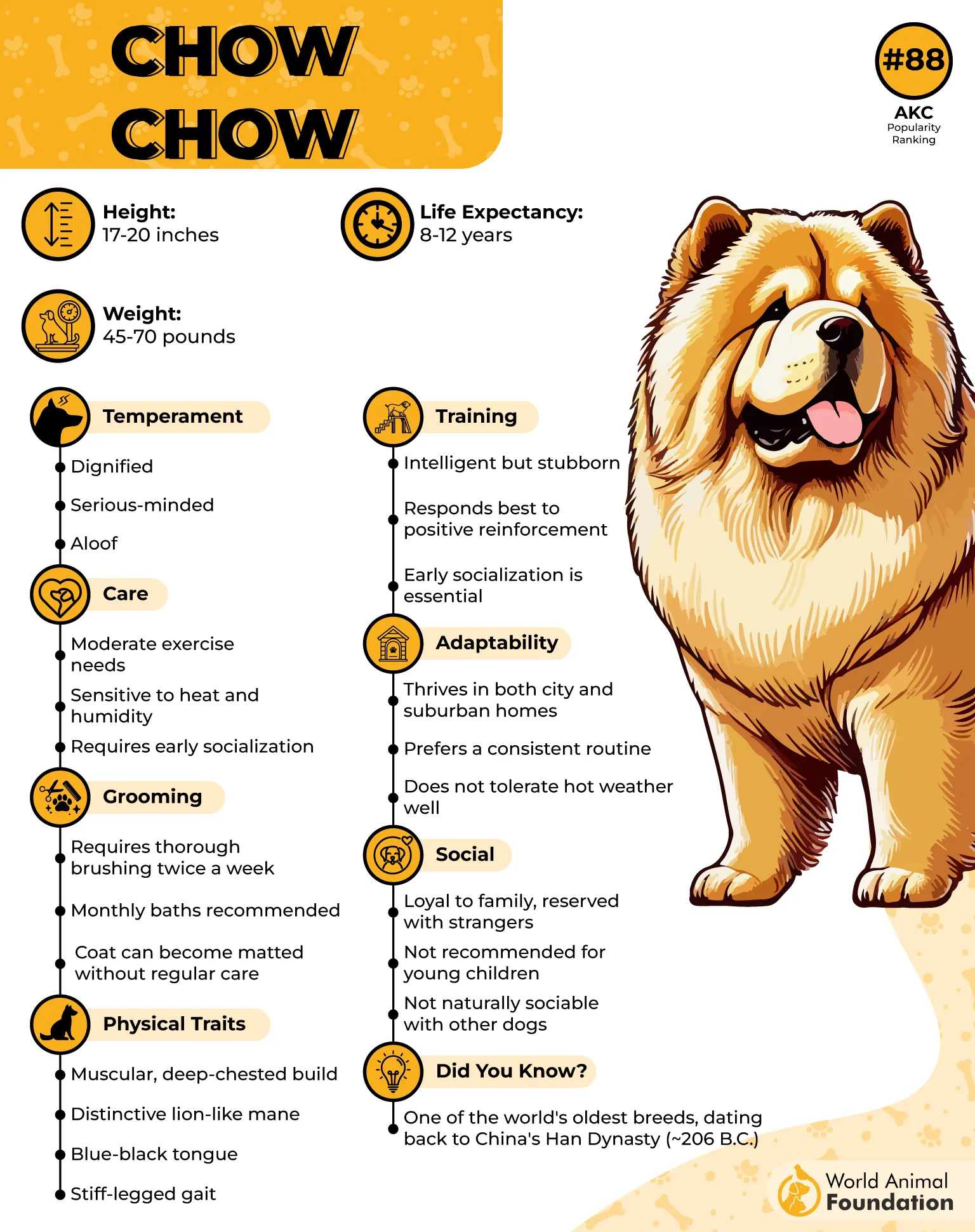
The Chow Chow’s tongue is part of the official breed blueprint. This isn’t some accidental pigmentation—this is the real deal. In fact, if a Chow Chow doesn’t have a solid blue-black tongue, it might raise some eyebrows in the dog show world.
These walking puffballs aren’t born that way. Chow puppies start out with soft, pink tongues—just like most other dogs. But once their eyes open (around 2–3 weeks old), that tongue starts shifting to a rich, inky blue-black, completing its transformation by about 6 months.
Let’s be honest—these dogs are already packed with personality. Aloof? Yes. Regal? Definitely. A little judgy? Absolutely. That dark tongue just completes the package. It’s like their version of eyeliner: dramatic, defining, and 100% iconic.
Chows aren’t overly affectionate, but when they love you, they really love you. Just don’t expect them to do zoomies or greet guests with tail-wagging enthusiasm. That’s beneath their royal image. A slow blink and a soft sigh are their version of “I adore you.”
Petplan noted Chow Chows aren’t just physically powerful—they’re also known for their independent and strong-willed nature, which can make them a challenging match for first-time dog owners.
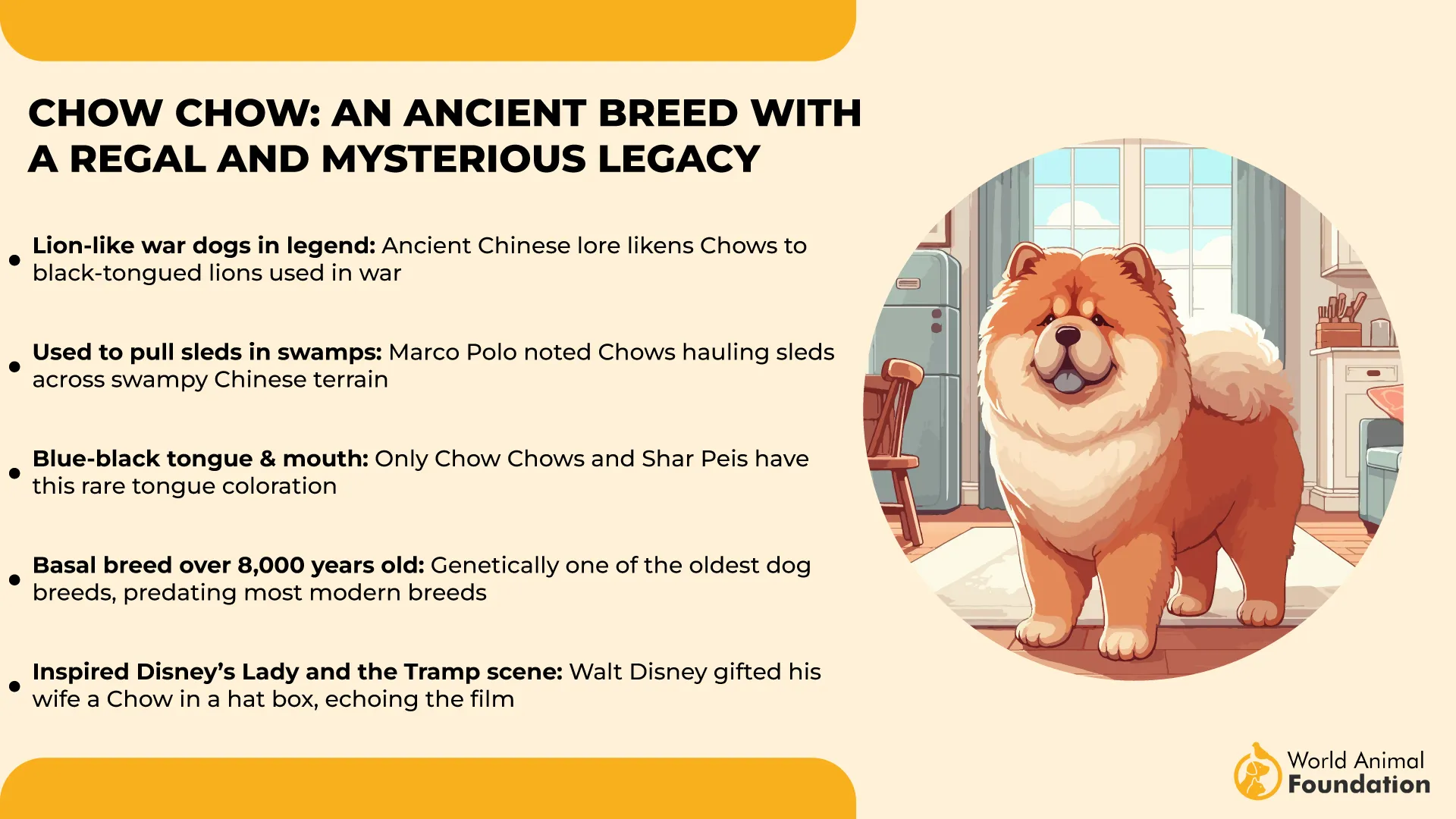
Fun Fact: The Chow is one of the oldest dog breeds in the world, dating back over 2,000 years in China, where they were used for hunting, guarding, pulling carts, and—believe it or not—even royal companionship.
2. Shar Pei
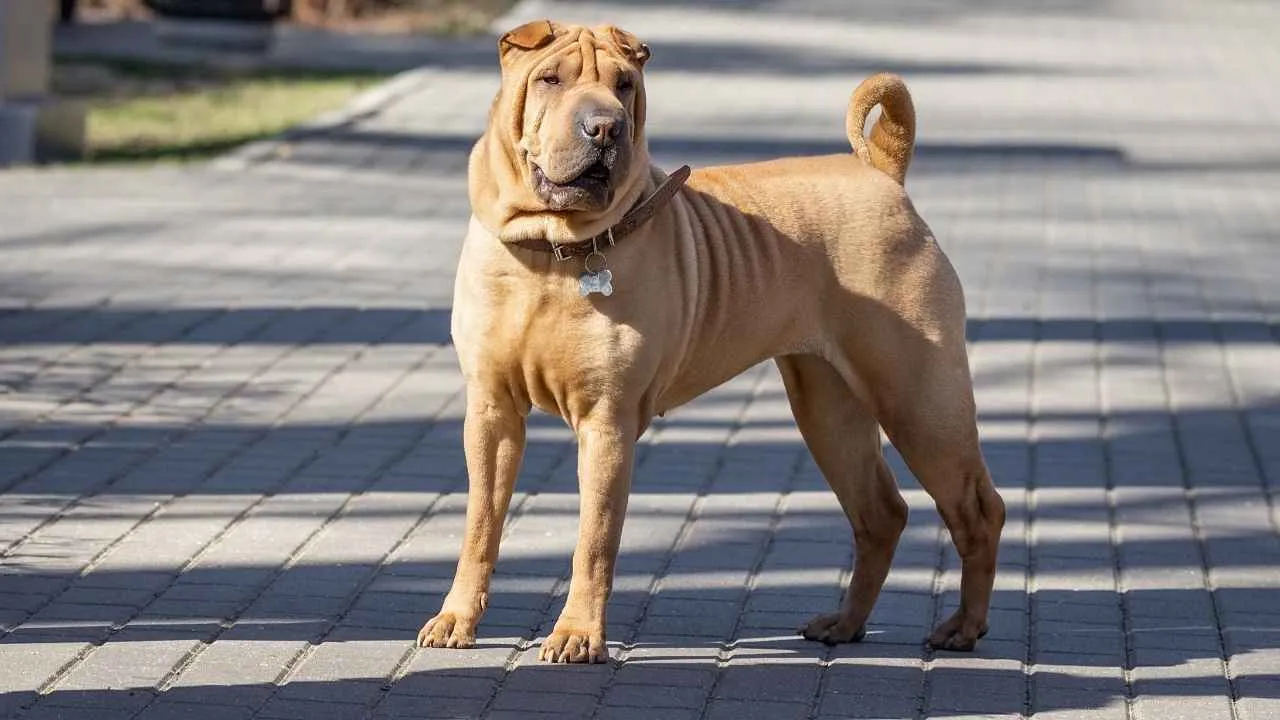
If you’ve ever wanted a dog that looks like it’s wearing an oversized hoodie made of velvet folds, the Chinese Shar Pei is your dream come true. While they may resemble some mastiff-type breeds in appearance, their lineage is more closely tied to spitz-type dogs, with the Chow Chow being their nearest relative.
The Shar Pei, once a highly popular breed, suffered a dramatic decline during periods of war and political unrest in 20th-century China. By the 1970s, their numbers had dwindled so significantly that the breed was nearly extinct.
But don’t let the squishy exterior fool you—this breed has been holding down guard duty in China for over 2,000 years. And here’s where things get official: unlike most other dogs on this list, the Shar Pei is supposed to have a blue-black tongue. That’s not a fun little pigment surprise—it’s a breed standard, baby.
Solid blue-black preferred, though some pups come with spotted versions. Either way, the tongue is a signature part of their look, like the cherry on top of a very wrinkled sundae.
While they’re loyal and affectionate with their family, Shar-Peis can be reserved around new people and may take time to feel comfortable with strangers.
Shar-Peis are relatively low-energy dogs that don’t need as much exercise as many other breeds. They’re content with short daily walks and adapt well to apartment living or smaller homes.
Fun Fact: This ancient breed was once so rare, they nearly vanished—at one point in the 1970s, they were dubbed the rarest breed in the world. Good thing they made a comeback.
3. Rottweiler
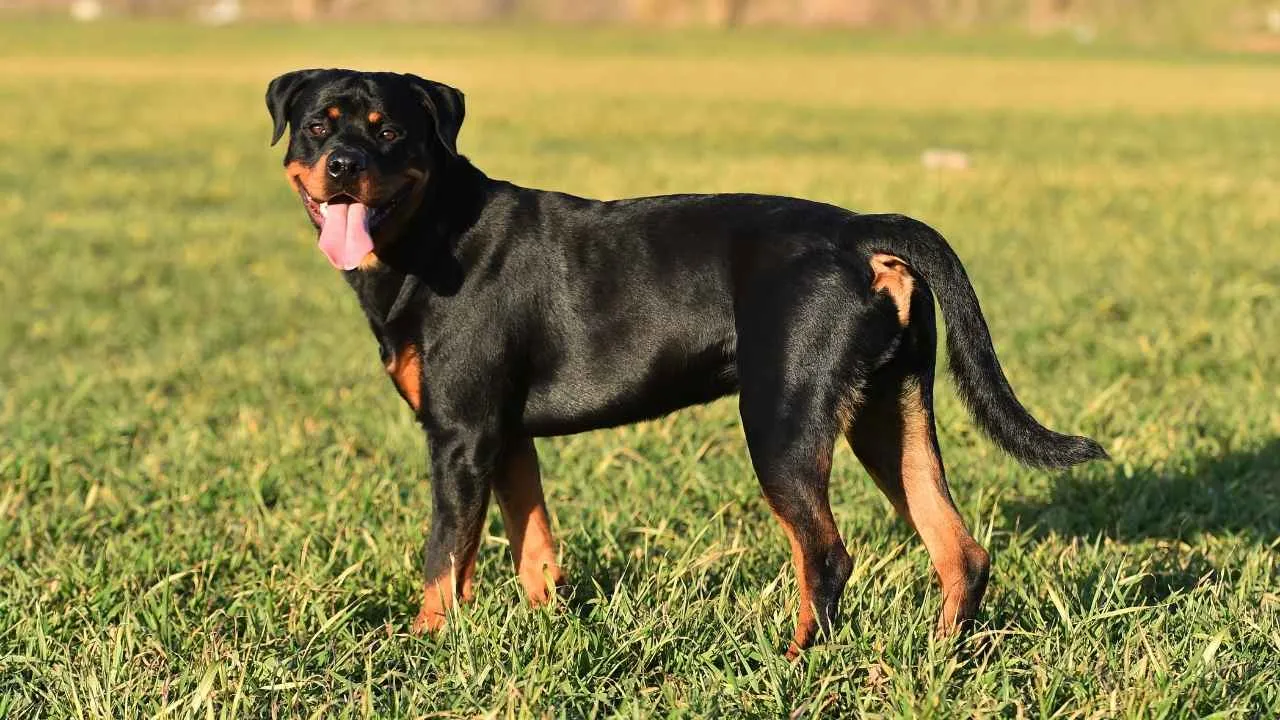
Meet the Rottweiler: the bodyguard of the dog world. Square jaw, rock-solid chest, intense stare… and a sometimes blue-black-spotted tongue that says, “I’m a serious dog—but I also dabble in tongue art.”
The Rottweiler gets its name from its place of origin—Rottweil, Germany. Known for their loyalty and protective nature, Rottweilers form deep bonds with their families. Once that connection is established, they become devoted guardians, always ready to defend their loved ones and the home they cherish.
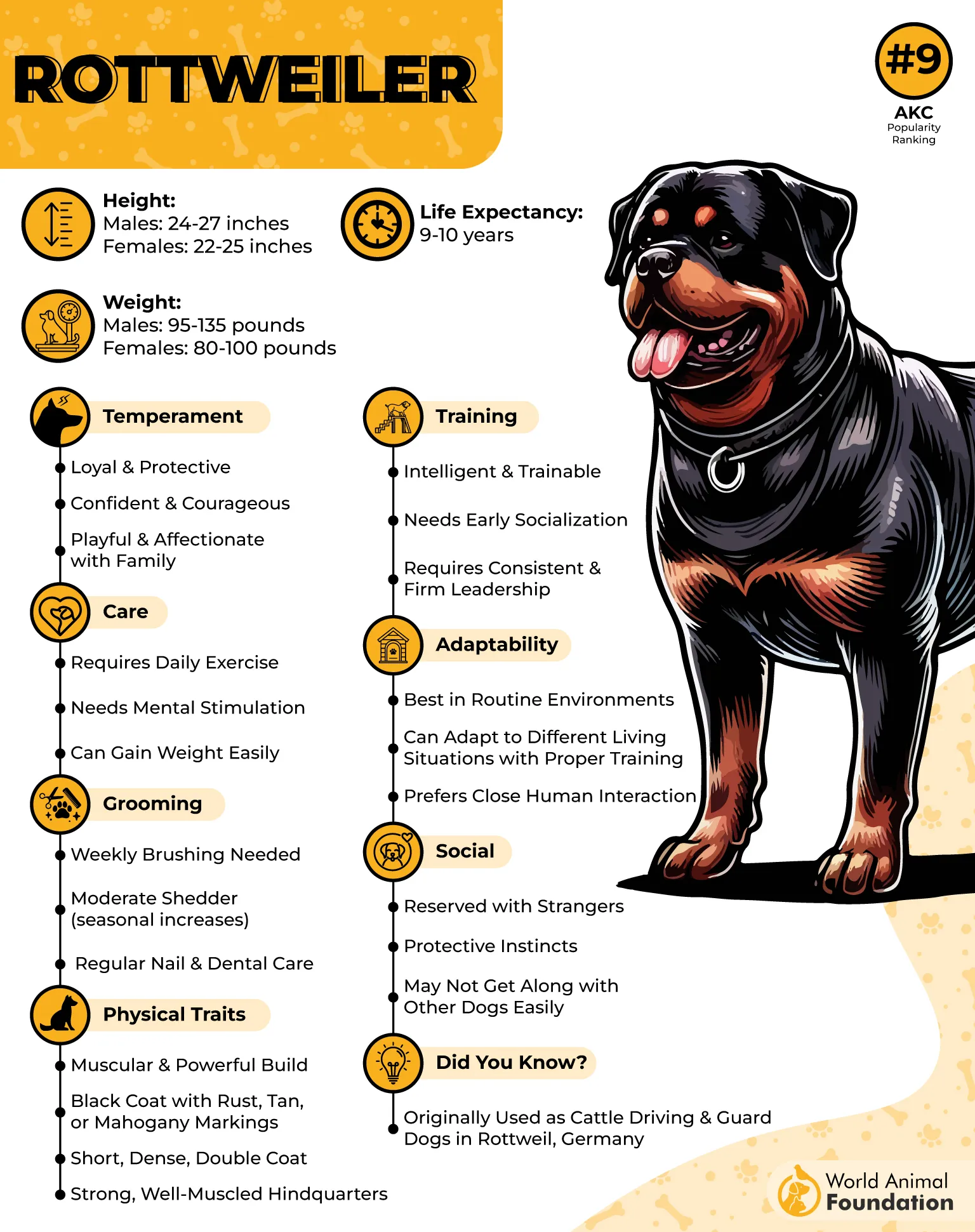
Unlike the Shar Pei, Rotties aren’t expected to have blue tongues, but they can have dark pigmentation or bluish spots—thanks again to that little pigment rebel known as melanin. It’s harmless, just quirky. Like finding a freckle in an unexpected place.
WebMD says in addition to being excellent watchdogs, Rottweilers are generally easy to train thanks to their intelligence and eagerness to please.
However, like all breeds, early socialization is key—introducing your Rottweiler puppy to a variety of people, environments, and experiences helps shape them into a well-mannered and confident adult dog.
Fun Fact: Rotties were once Roman cattle dogs—marching alongside legions, protecting livestock, and probably judging Roman sandals. Now? They’re one of America’s favorite breeds, known for their work ethic, brains, and that glorious, goofy grin.
4. Tibetan Mastiff
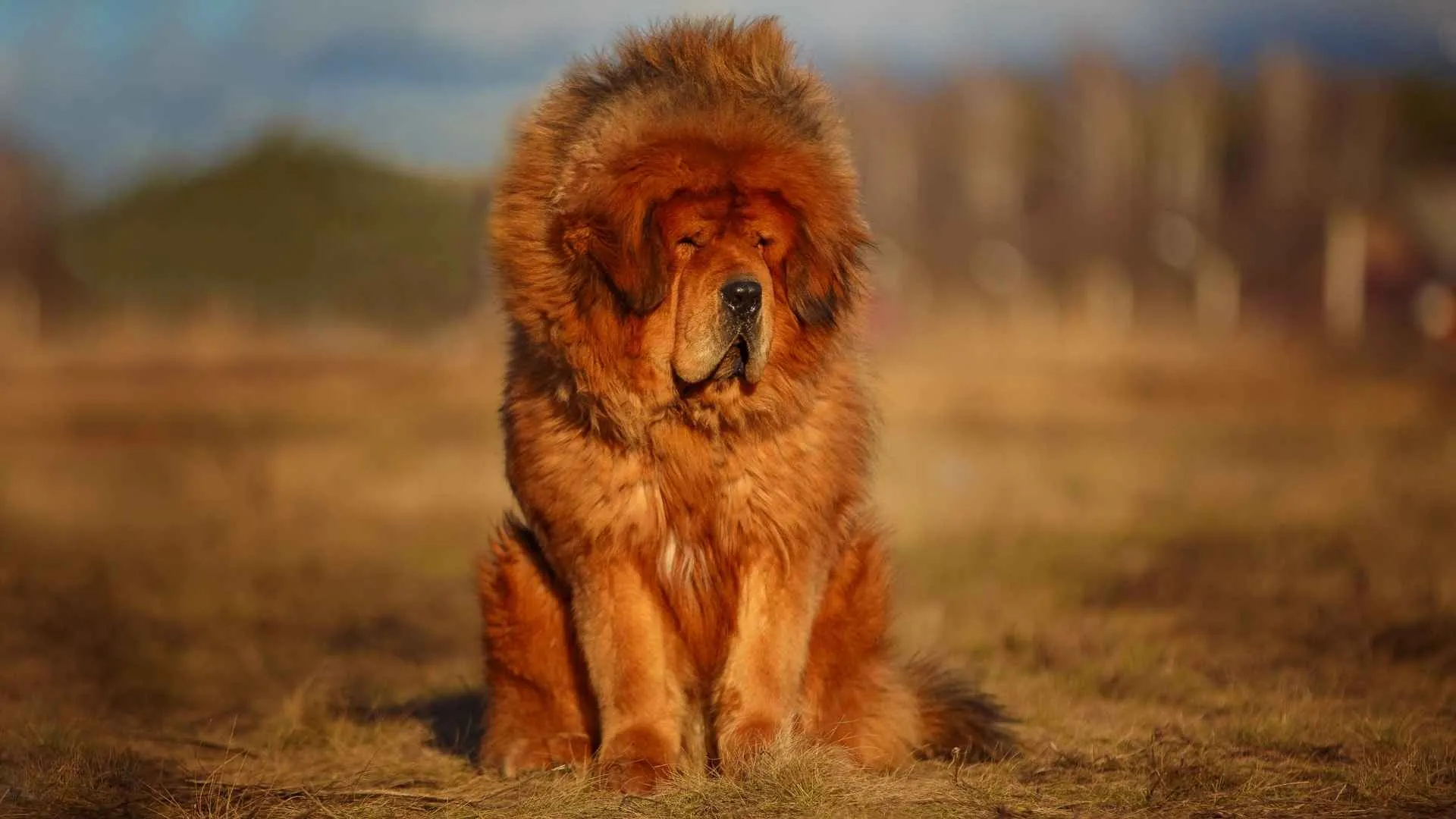
If a lion and a polar bear had a baby and raised it in a Himalayan monastery, you’d get the Tibetan Mastiff—a massive, mythical-looking dog that oozes ancient wisdom and “Don’t mess with me” vibes.
Originally bred to guard monasteries and flocks from wolves, leopards, and other Himalayan “nope” creatures, this breed is all power, presence, and floof.
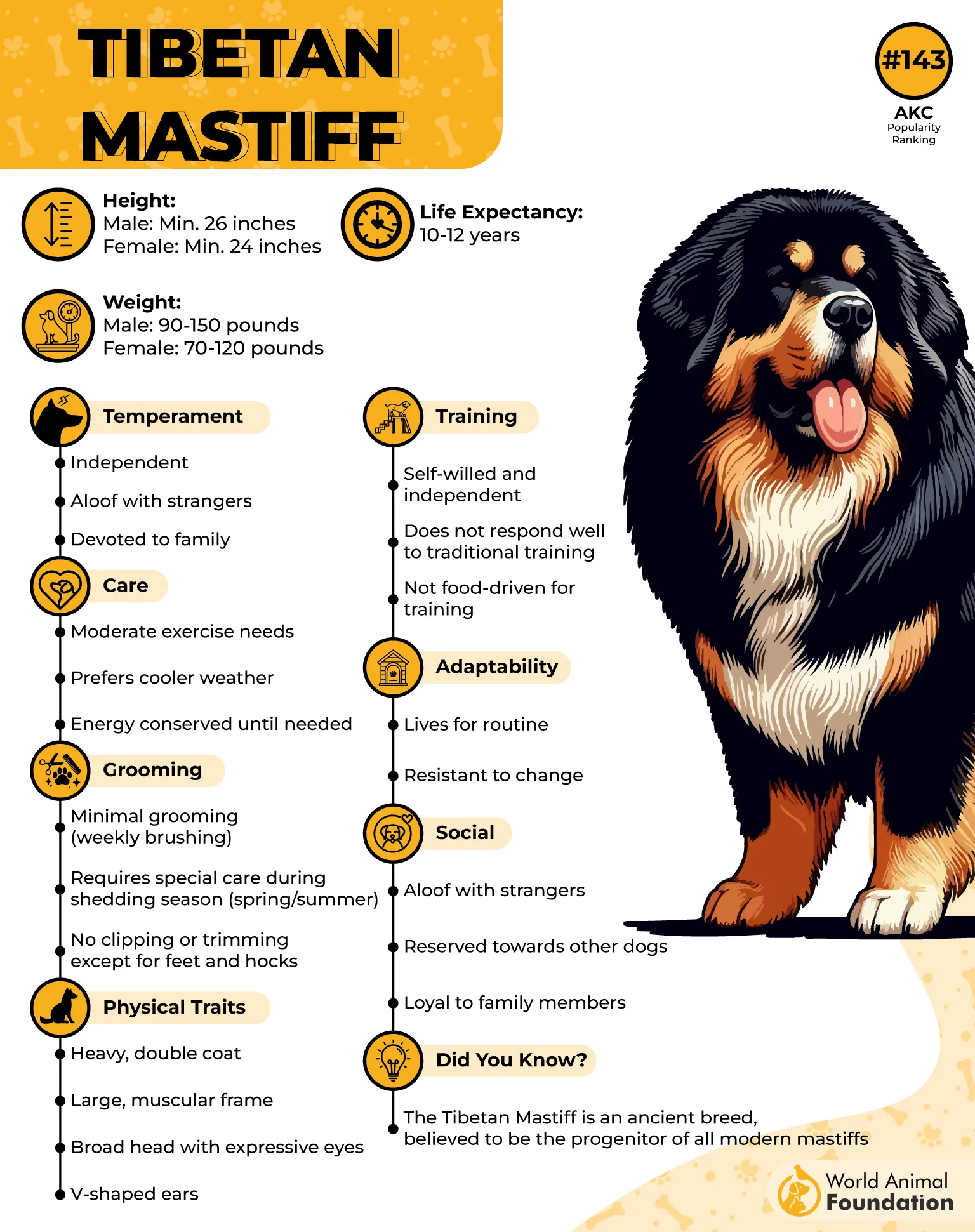
The Tibetan Mastiff is classified as a giant dog breed, typically weighing between 70 to 150 pounds. They have an imposing appearance, featuring a broad, powerful head, deep-set eyes, a square-shaped muzzle, and a strong, muscular build.
Their bushy, feathered tail curls over their back, and their overall stance is confident and alert. And every so often, hiding behind those fearsome fangs is a bluish or dark-spotted tongue, just to keep you guessing.
What gives?
Well, while Chow Chows and Shar-Peis are the official blue-tongue bosses, Tibetan Mastiffs sometimes show pigmented spots or patches on their tongues. It’s just extra melanin, not a health red flag—think of it like a birthmark that makes them look 2% more intimidating (as if they needed it).
Known for their aloof yet watchful nature, Tibetan Mastiffs can be deeply loyal to their families. Their thick, double-layered coat requires consistent brushing to prevent matting and shedding, and due to their heavy fur, they are much better suited to cooler climates and may struggle in hot weather.
Fun Fact: In ancient Tibet, owning one of these dogs was a status symbol, kind of like driving a Rolls-Royce made of fur and muscle. And yes, some Tibetan Mastiffs have been sold for hundreds of thousands of dollars. Blue tongue? Must be the premium model.
5. Pomeranian
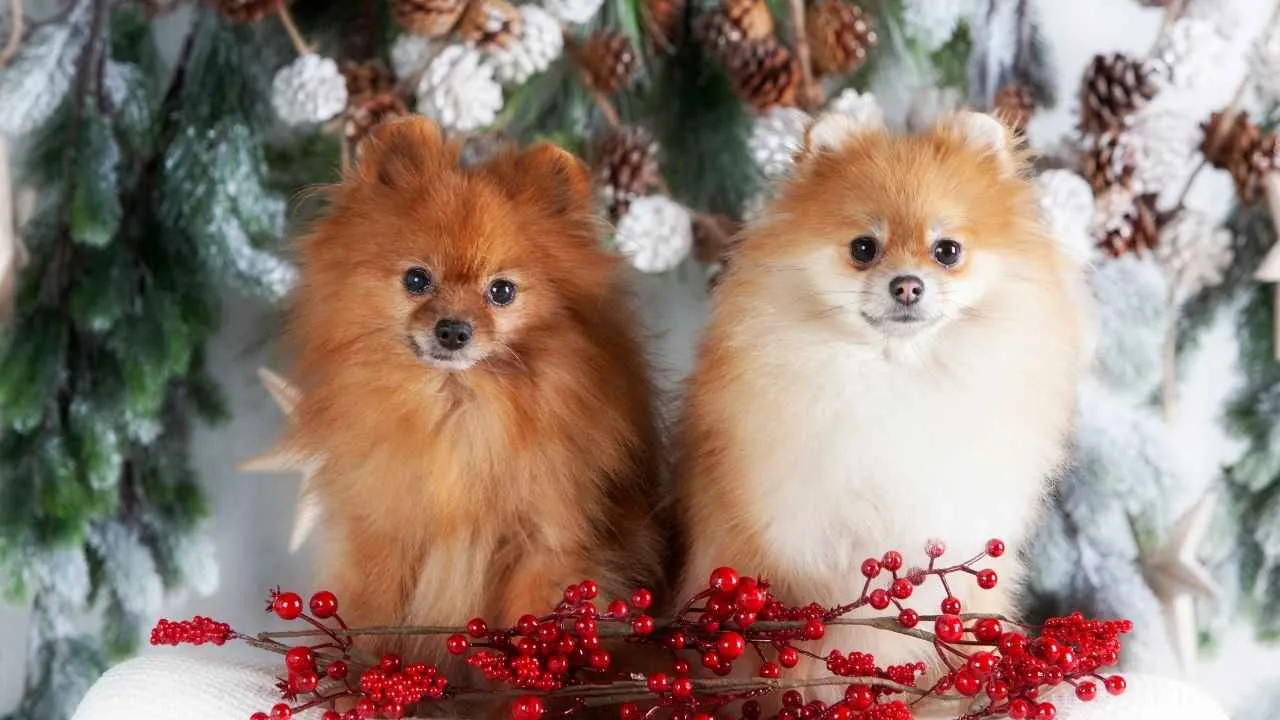
Cue the sparkle filter and theme music—because here comes the Pomeranian. This toy-sized superstar struts like it owns the sidewalk (and your heart), with a bark that says “security system” and a face that screams “Instagram me.”
Today, the Pomeranian is one of the tiniest dog breeds, standing only 6 to 7 inches tall and weighing between 3 to 7 pounds. Pomeranians are known for their foxlike face, a thick ruff of fur around the neck, a compact square-shaped body, and a fluffy double coat that gives them their signature puffball appearance.
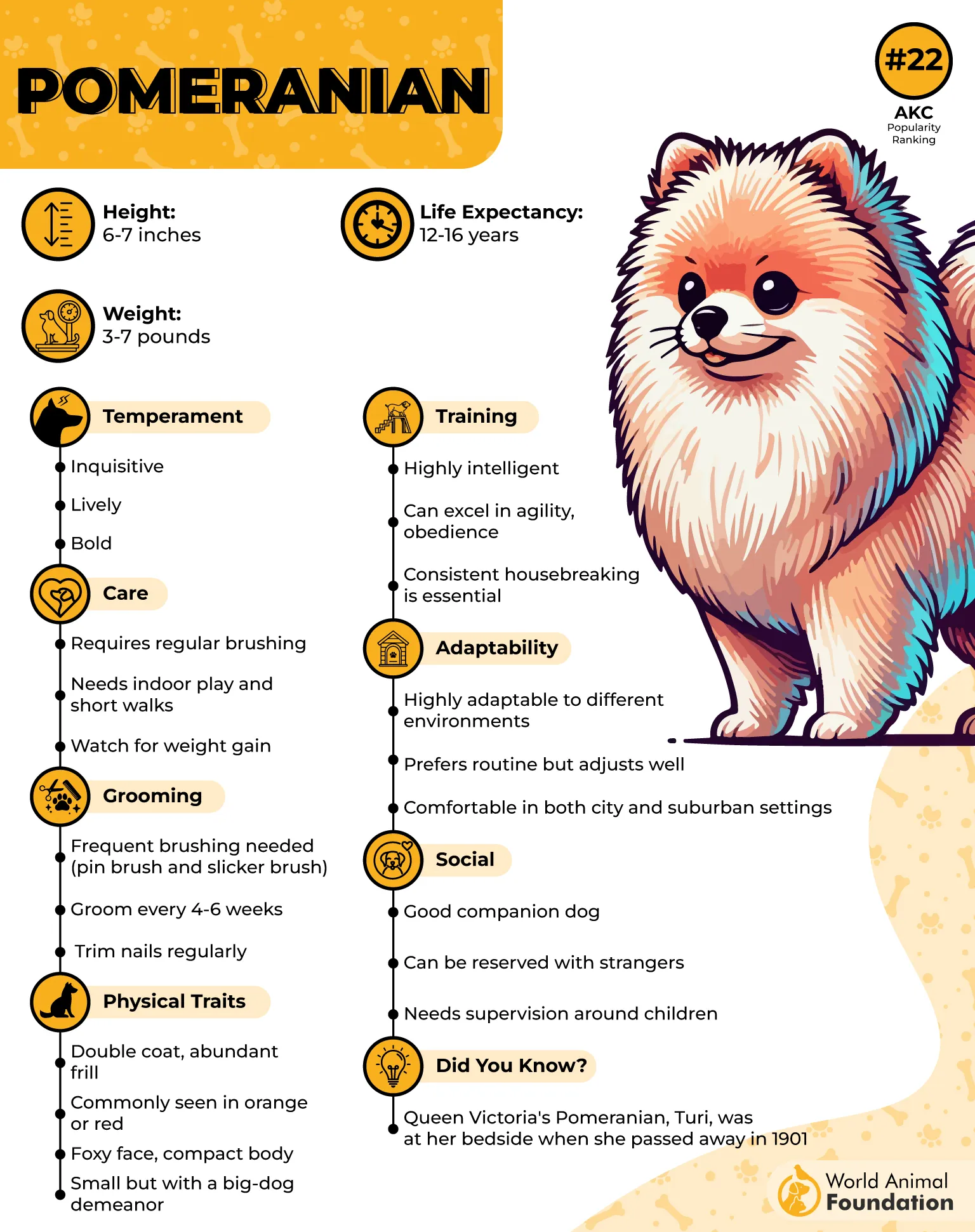
And sometimes? They’ve got a tiny blue or dark patch on their tongue—a little surprise in the middle of all that sass. Just like with other breeds on this list, it’s usually melanin, plain and simple. No need to panic. These spots are just pigmentation quirks that add character, kind of like a beauty mark on Marilyn Monroe.
PetMD noted Pomeranians make wonderful companions for a wide range of pet parents, including families, singles, and seniors.
While they do have a playful and spirited nature, their tiny size means they don’t need a lot of outdoor exercise to stay happy. A few short play sessions and indoor activities are usually enough to keep these little charmers content and healthy.
Fun Fact: Despite their glamorous looks, Poms are super smart and spunky. Their little blue-spotted tongues are just another reason they’re bursting with personality—like a canine cupcake with a secret center.
6. Newfoundland
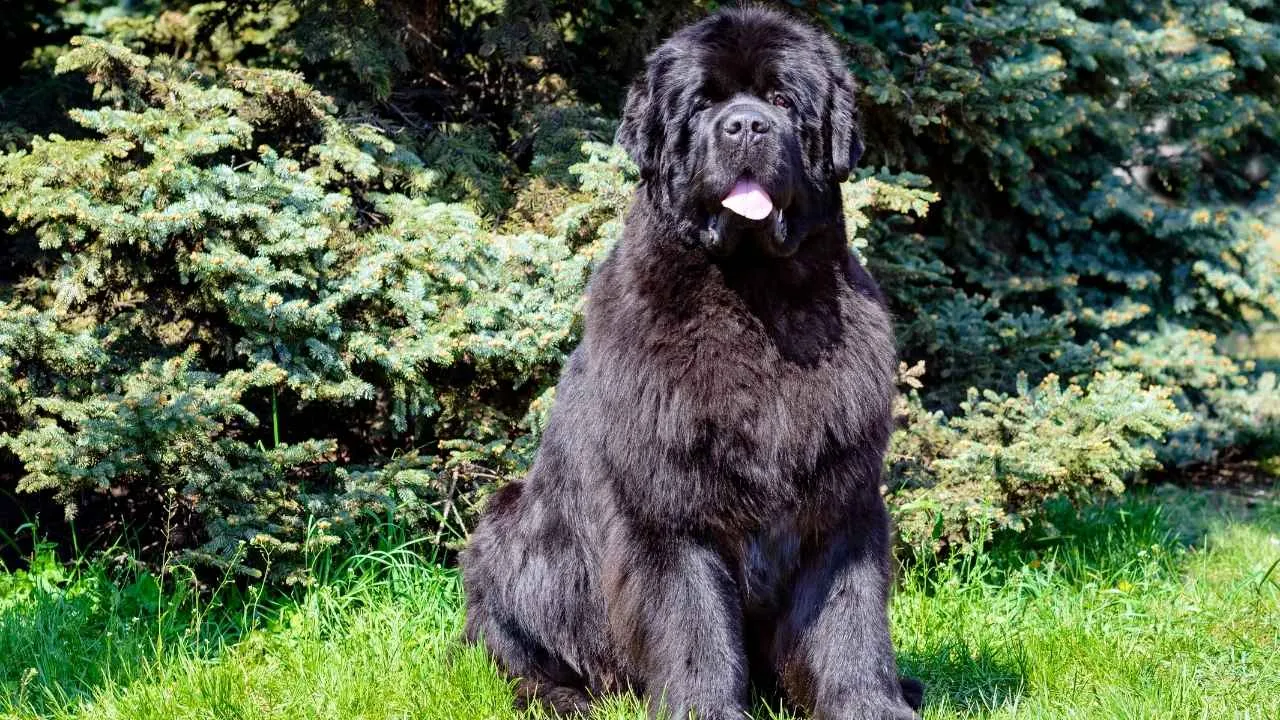
Imagine a dog the size of a small bear, with the heart of a Disney protagonist and the tongue of a smurf-in-training—that’s the Newfoundland for you.
These massive fluffballs hail from Canada (the land of maple syrup and moose sightings), originally bred to help fishermen haul nets, save drowning sailors, and look fabulous while doing it.
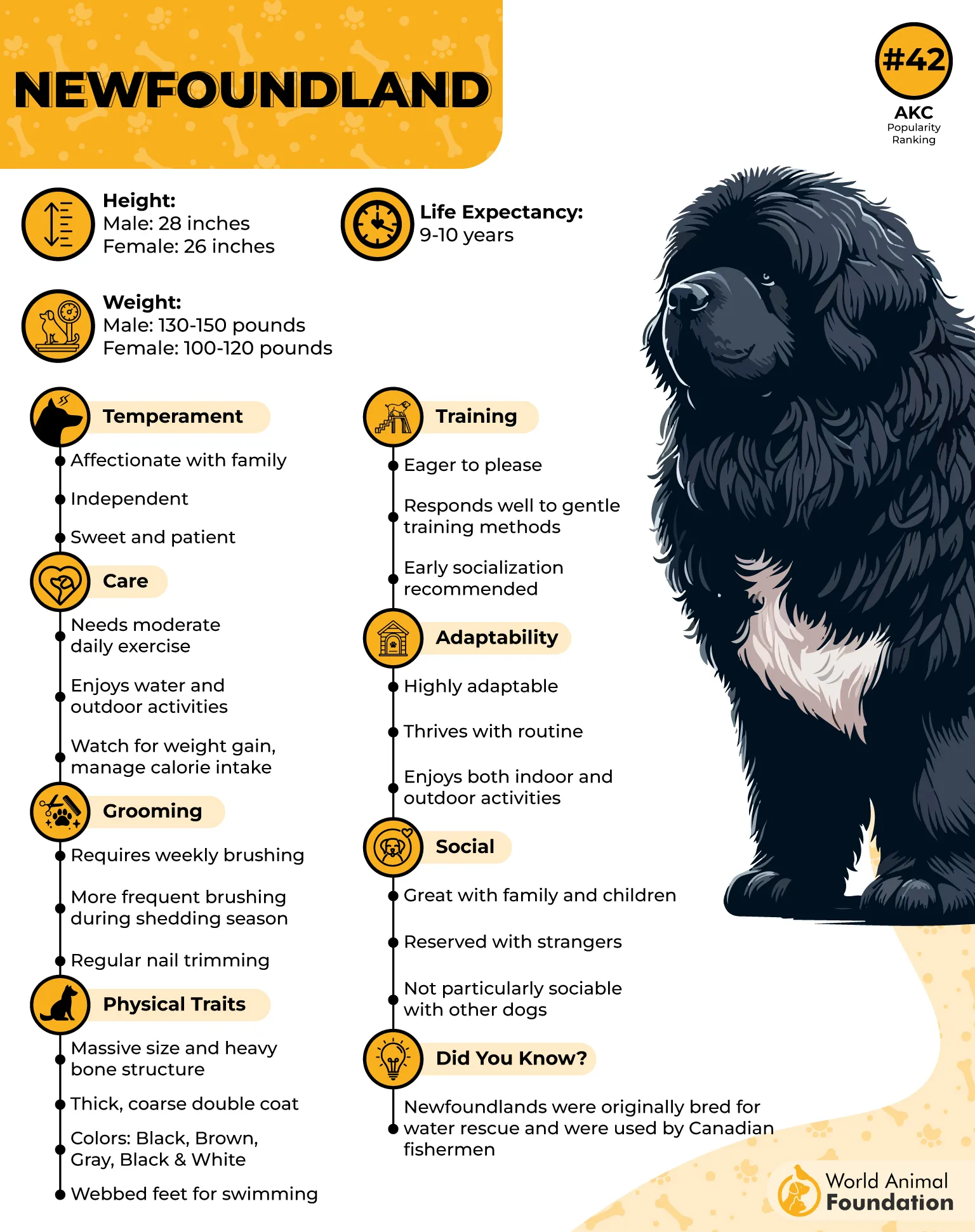
A fully grown Newfoundland dog can weigh between 100 to 150 pounds—about as much as an adult human—and stands around 26 to 28 inches tall at the shoulder.
Their massive frame is covered with a thick, water-resistant double coat that sheds throughout the year. Their webbed feet and water-resistant coats scream “Olympic swimmer,” while their calm, nanny-like temperament makes them one of the best family dogs around.
But here’s the twist: some Newfoundlands sport bluish or dark-purple tongues, a trait that occasionally shows up due to extra melanin—aka natural pigment—kind of like a birthmark but for tongues. It’s not a health issue, just one more thing that makes them stand out.
Newfoundlands are naturally calm and laid-back dogs that don’t require intense daily exercise, but that doesn’t mean they should be sedentary. Due to their deeply affectionate nature, Newfoundland dogs can be prone to separation anxiety if left alone for extended periods.
Fun Fact: A Newfoundland named “Nana” was featured in Peter Pan. And while she didn’t speak, she likely would’ve had the voice of Morgan Freeman if she had. Wise, warm, and possibly blue-tongued.
7. German Shepherd
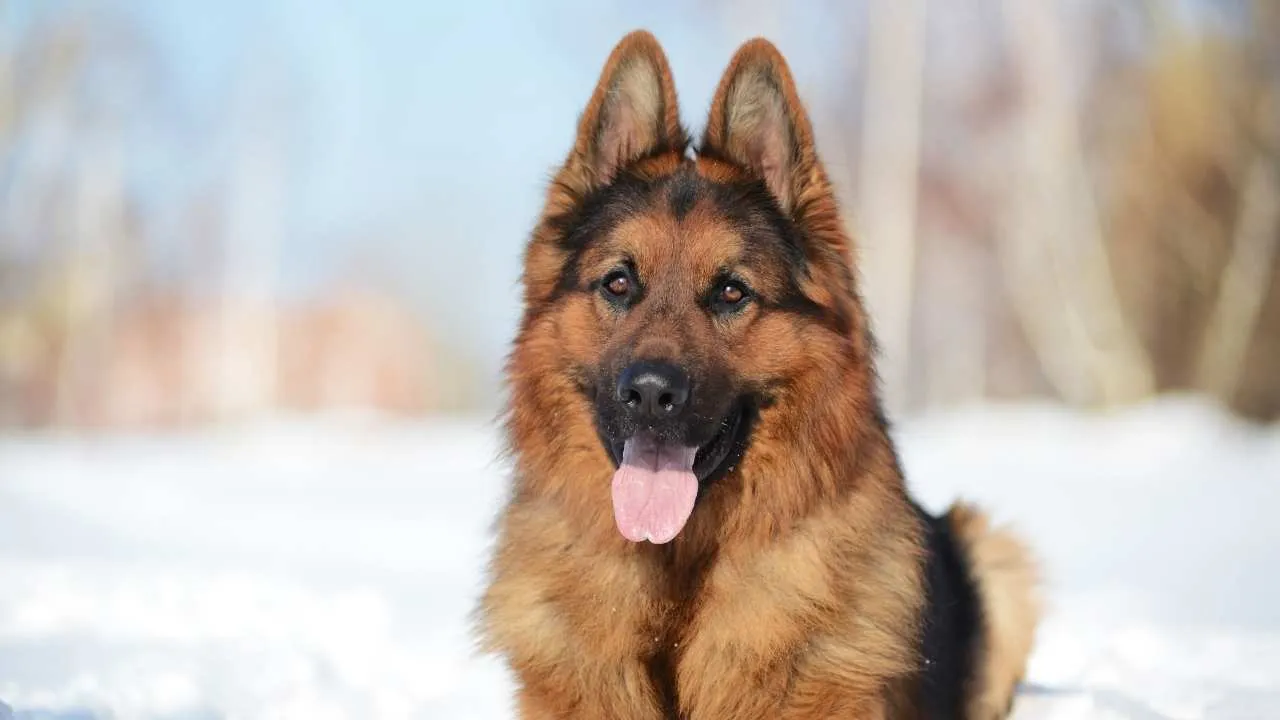
We all know the German Shepherd: the canine MVP of police forces, military squads, and Hollywood thrillers. Smart, intense, loyal to the bone—and sometimes sporting a bluish-black spot or even a full blue-ish tongue that makes you do a double-take.
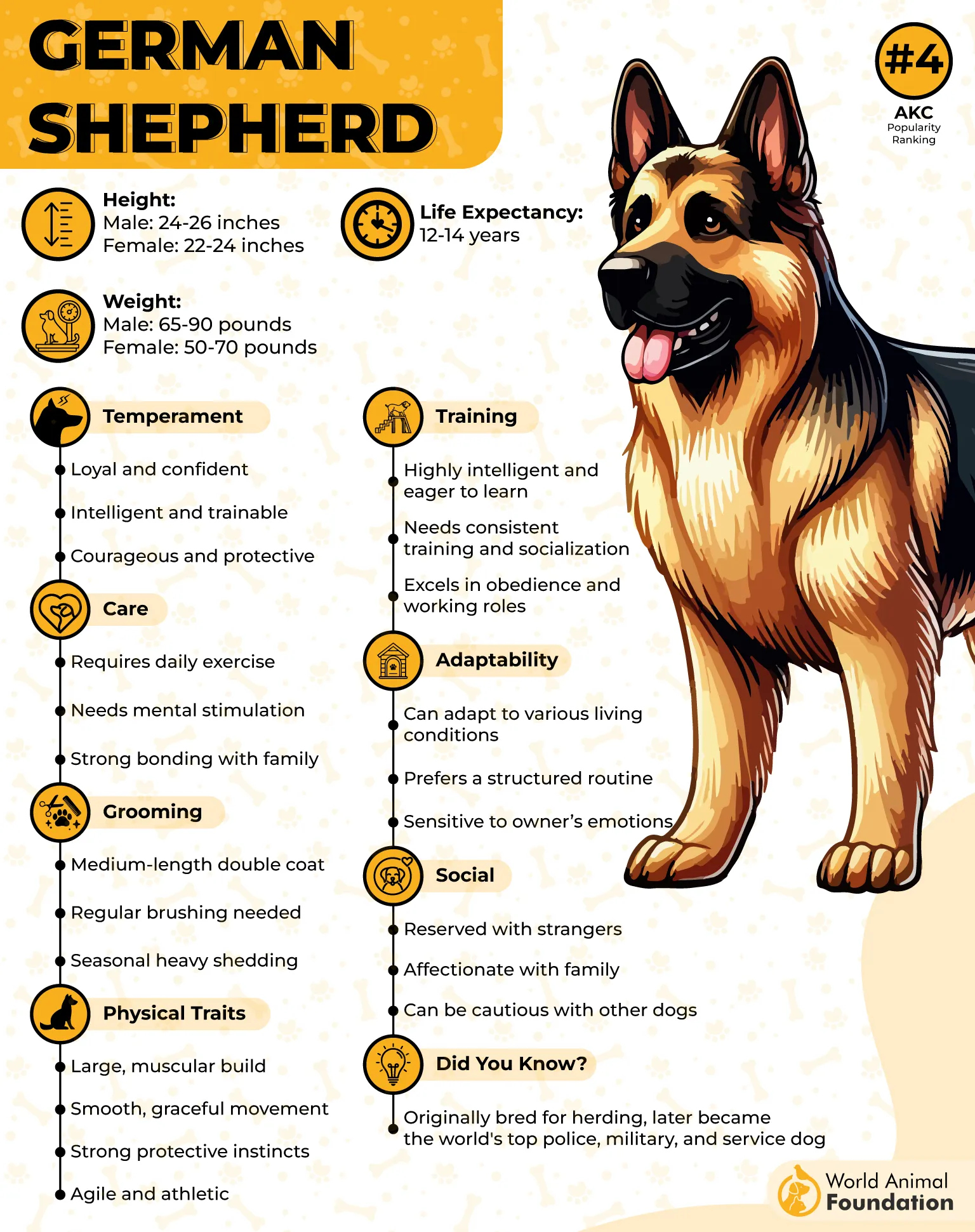
This large dog breed is one of the most popular in the U.S., thanks to its friendly nature and versatility. They typically weigh between 50 and 90 pounds and stand about 22 to 26 inches tall at the shoulder.
Now, don’t worry—just because your German Shepherd’s tongue looks like it’s been dipping into blueberry pie doesn’t mean anything’s wrong. Like their Newfie friends, this is usually due to melanin deposits and is totally normal.
German Shepherds are highly energetic dogs that need consistent training and plenty of regular exercise to stay happy and well-behaved. They thrive best in active households and with experienced owners who can keep up with their physical and mental demands.
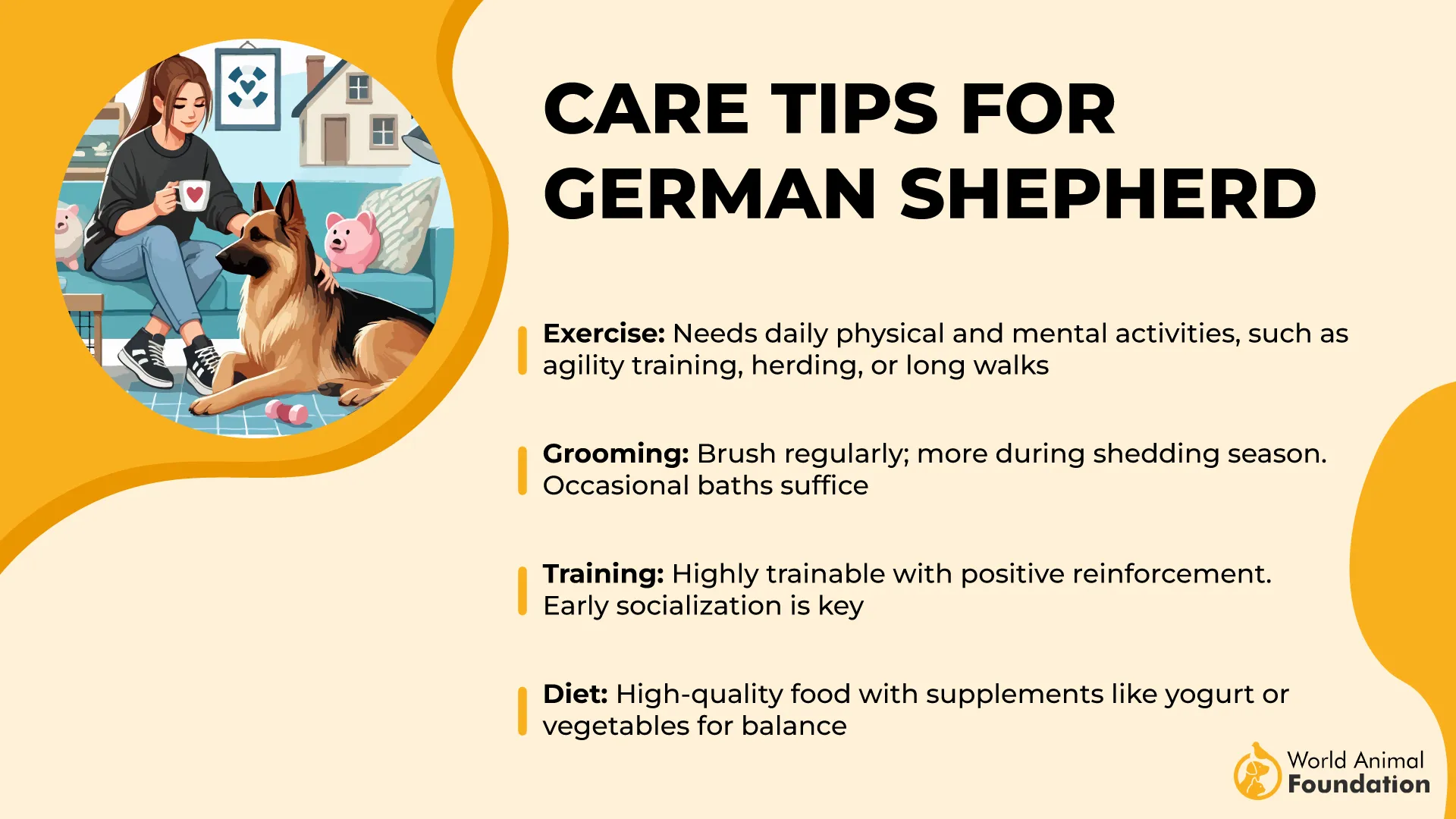
Fun Fact: Despite their tough-guy persona, GSDs can be huge softies with their families. If you’ve got one with a bluish tongue, consider yourself lucky—you’ve got a tough cookie with a unique, mysterious twist.
Conclusion
Many dog breeds have unique characteristics, and one particularly fascinating trait is a blue-black tongue. While pink tongues are the norm, some breeds like the Thai Ridgeback and Chow Chow naturally exhibit blue tongues or blue spots, due to excess pigmentation or a genetic mutation. In some cases, pink spots on a darker tongue—or vice versa—are seen, especially in mixed breeds or related breeds.
Though often harmless, these tongue color variations can occasionally raise questions in veterinary medicine, particularly if they appear suddenly. While not always a disqualifying fault, pigmentation is sometimes used as other evidence of breed purity or mixed ancestry. Just like wrinkled skin or pigmented fur, tongue spots can be seen across several breeds and even other animals. To stay up to date, always consult a vet if your dog’s tongue changes color unexpectedly, though in many breeds, it’s perfectly normal.


